Which Decking Oils Are Best For Hardwood Decks: A Guide to UV Protectant Oils
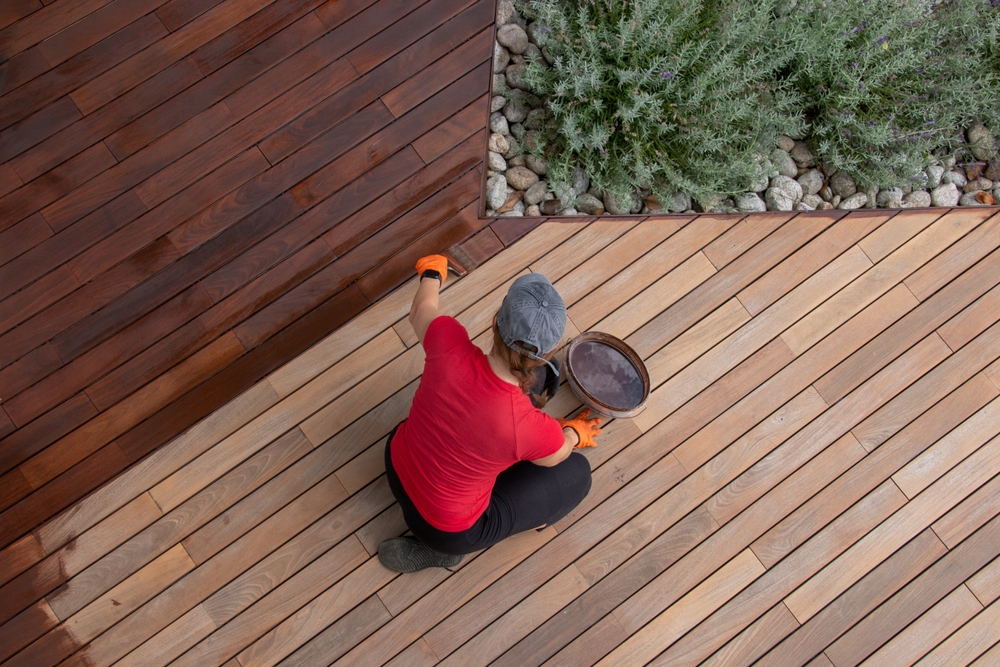
Which Decking Oils Are Best For Hardwood Decks: A Guide to UV Protectant Oils
What is UV Protectant Oil?
UV protectant oil is a game-changer for those looking to preserve the natural beauty of their hardwood decks. It’s more than just a coating – this oil penetrates the densest of exotic hardwoods, offering protection and conditioning, while maintaining a completely natural appearance. Many formulations include UV filters to combat the effects of sun damage, with darker-colored oils providing superior UV protection. Deep-penetrating formulas even safeguard against weathering and UV damage, reducing the risk of timber cracking, splitting, and warping.
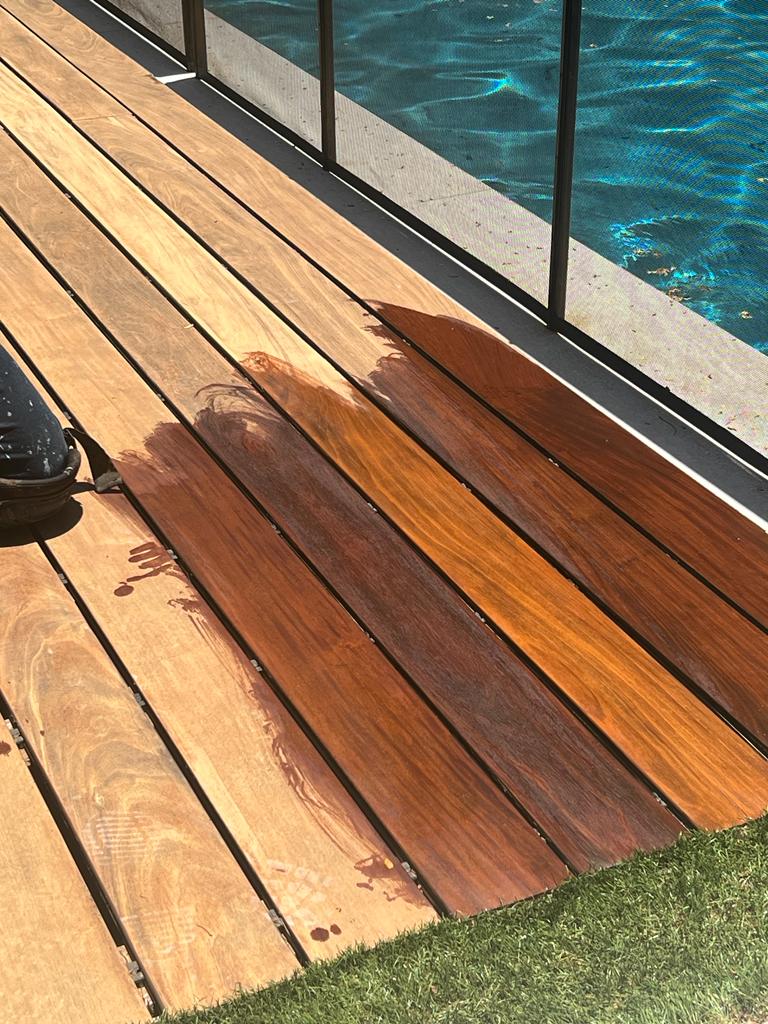
Wood stain specifically formulated for dense hardwoods, UV protectant oils like Penofin and Ipe Oil by Deckwise come with added ultraviolet protection. Their transparent natural tones allow the wood’s beauty to shine through, making them ideal for even the largest boardwalks and decks around the country. These oils provide advanced mildew protection and, crucially, they are not surface films that crack, bubble, or peel.
Penofin, in particular, stands out by allowing the wood to breathe, a vital feature when working with exotic hardwoods such as mahogany, teak, ipe, cumaru, garapa, tigerwood, and many others.
Why Use Hardwood Oils?
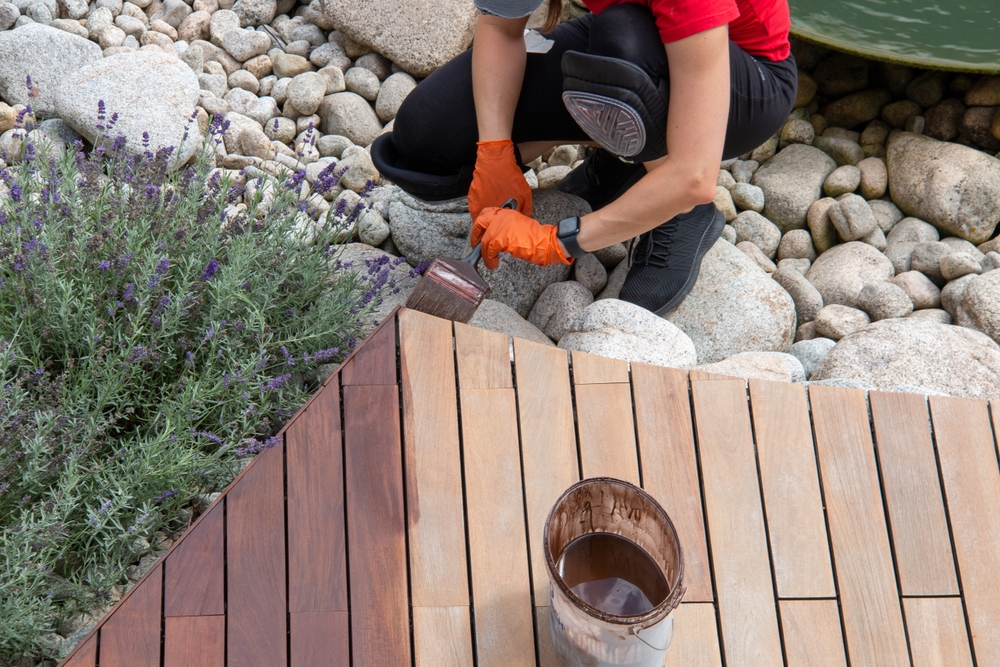
Homeowners and professional contractors appreciate the elegance of well-maintained hardwood decks. Yet, the key to ensuring longevity lies in protecting these hardwoods from the harmful impact of UV rays and moisture. Ipe Oil by Deckwise and Penofin are formulated to dry properly on hardwoods like cumaru, ipe, tigerwood, and garapa, as well as other oily exotic lumber, providing optimal protection and nourishment.
When homeowners don’t use these oils every year or so, hardwood decks can fade into a grayish brown color, that is still beautiful, but not the look every homeowner wants. So, with a quick oiling every 6 months to a year, decks can preserve their natural beauty.
The amount of time in between oiling your deck depends on the level of sun exposure. Horizontal surfaces, like decks, docks, and pathways, require oiling more frequently than vertical surfaces like sidings and ceilings.
Many Oils Out There: Softwoods and Hardwoods
Many oils on the market are formulated for specific wood types—some for softwoods and others for hardwoods. Choosing the right oil tailored to your hardwood ensures optimal protection and longevity for your deck. At Brazilian Lumber, we directly import tropical hardwoods like ipe, cumaru, and garapa. So, we recommend Ipe Oil by Deckwise and Penofin Hardwood Oil, each designed to meet the unique needs of different hardwoods. With that in mind, this blog specifically covers hardwood oils rather than softwoods.
Woods that Benefit From Hardwood Oil
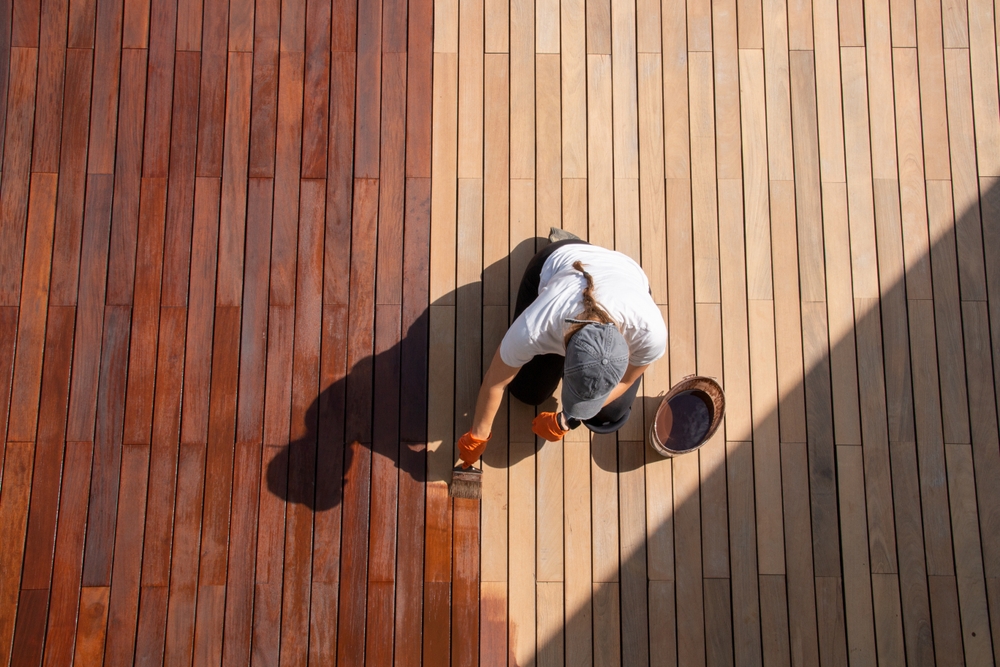
In Southern California, and specifically counties like Los Angeles, San Diego, and Orange County, the majority of homeowners and contractors use exotic hardwoods for decking because of their resistance to weather, decay, termites, fungus, splintering, and scratching. Here are some quick facts about each.
Ipe:
Color: Dark brown with olive tones
Grain: Fine to medium
Density (Janka Hardness): Approximately 3,600 lbf (out of 4,000, making it extremely dense)
Applications: Decking, outdoor furniture, boardwalks, siding, saunas, outdoor showers, pergolas, docks, ceilings, gates
Garapa:
Color: Golden yellow to honey brown
Grain: Fine to medium
Density (Janka Hardness): Approximately 1,710 lbf
Applications: Decking, siding, gates, pergolas, privacy screens
Cumaru:
Color: Reddish-brown to dark brown
Grain: Interlocked
Density (Janka Hardness): Approximately 3,330 lbf
Applications: Decking, ceilings, soffits, siding/enhancement walls, outdoor furniture, pergolas
Tigerwood:
Color: Golden to reddish-brown with dark streaks
Grain: Straight to wavy
Density (Janka Hardness): Approximately 2,170 lbf
Applications: Decking, flooring, siding
Top 4 Benefits of Hardwood Oils:
1. Enhanced UV Resistance:
UV protectant oils create a shield against harmful sun rays, preventing color fade and sun damage. This ensures your hardwood deck maintains its rich, natural hues over the years.
2. Rich Color Retention:
The oils enhance the wood’s natural tones, providing a lustrous appearance. The transparent finish allows the intrinsic beauty of the wood to shine through, creating an aesthetically pleasing outdoor space.
3. Moisture Repellent:
UV protectant oils not only shield against UV damage but also form a barrier against moisture. This reduces the risk of cracking, splitting, and warping, ensuring the longevity of your deck.
4. Easy Application/Maintenance:
The application process is user-friendly, and maintenance is simplified. With just one coat for many hardwoods, the initial application process is straightforward, and over time, maintenance becomes less frequent as the wood fibers are thoroughly protected.
Top 2 Drawbacks of Hardwood Oils:
1. Yearly Maintenance:
To maintain the color and protective benefits, yearly reapplication is recommended. This maintenance, while crucial, may be perceived as a drawback for those seeking a zero maintenance solution.
2. Frequency of Application in High Sun Exposure Areas:
In regions with intense sunlight or heavy foot traffic, more frequent applications (every 6 months) might be necessary. This could be considered a drawback for those looking for a set-it-and-forget-it solution.
How to Apply UV Protectant Oil for Decks: Easy Application
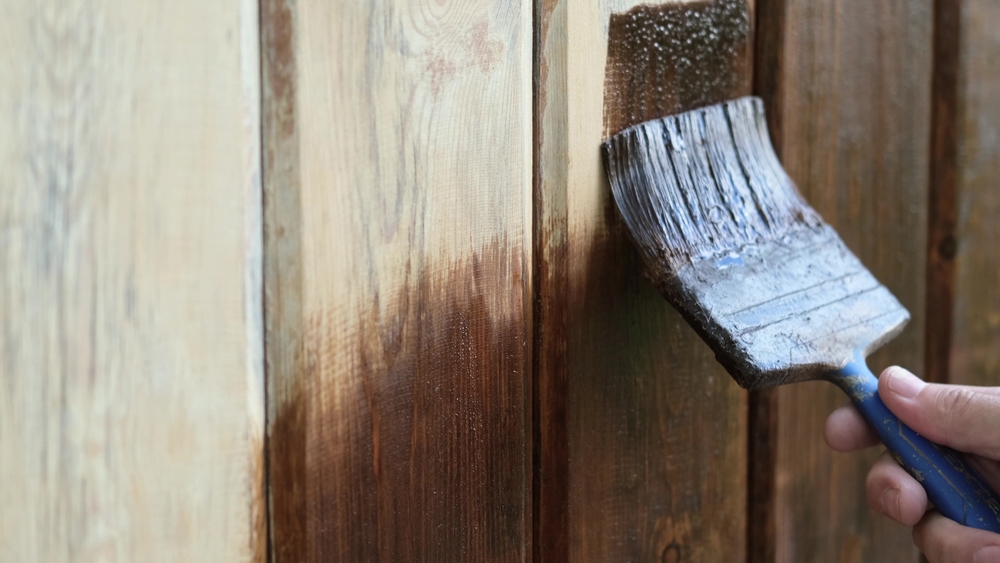
1. Clean the deck thoroughly and let it dry.
2. Apply oil with a brush, stain pad, or sprayer. Brush or stain pad is preferred.
3. Wipe off excess product after 30 minutes.
4. Dispose of rags properly to prevent combustion. Rags need to be placed in a sealable metal container with water until you can dispose of the rags at a local hazardous materials drop off center, which can be found on CleanEarth for California residents.
For those who are more visual learners, watch our oil application video on our YouTube channel.
Application Tips: To make the most of UV protectant oils:
1. Avoid overapplication.
2. Ensure no rain is expected for 48 hours.
3. Hardwoods typically require only one coat.
4. Horizontal surfaces (decking, docks, pathways) and areas with high UV exposures or heavy traffic need oil applied more frequently.
5. Overtime maintenance becomes less frequent because wood fibers become completely protected.
Eco-Friendly Considerations
Sustainability matters. When selecting a UV protectant oil, consider the brand’s commitment to environmental responsibility. Some, like Penofin, utilize carefully harvested crops, such as Brazilian Rosewood Oil, to guarantee sustainable practices and support local ecosystems. This commitment extends beyond raw materials to encompass safe working and living environments, ensuring a greener approach to hardwood maintenance.
With a quick Google search, you’ll see that there are many, many, many different brands out there that sell UV-protectant oils. It’s important to make sure the oil you buy is for the type of wood deck you have. Overall, these oils will preserve the color and functionality of your wood. Whichever oil you decide to go with, make sure to follow the steps properly! As always, a happy deck is a well-maintained one.

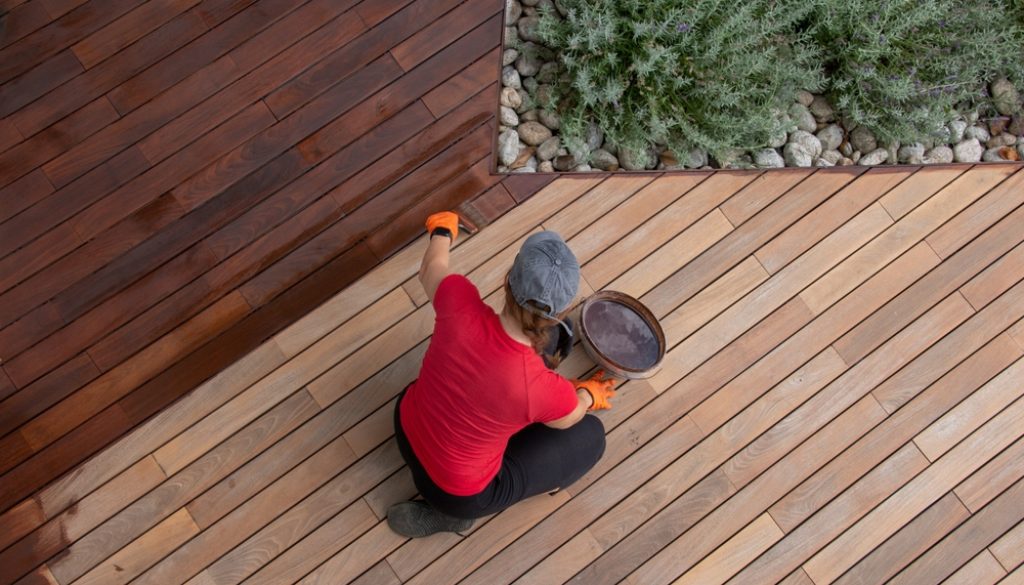


June 12, 2024 @ 7:59 pm
Hey I know this is off topic but I was wondering if you knew
of any widgets I could add to my blog that automatically tweet my newest
twitter updates. I’ve been looking for a plug-in like this for quite some time and was hoping maybe you
would have some experience with something like this. Please let me
know if you run into anything. I truly enjoy
reading your blog and I look forward to your new updates.
June 12, 2024 @ 8:40 pm
Yesterday, while I was at work, my cousin stole my apple ipad
and tested to see if it can survive a twenty
five foot drop, just so she can be a youtube sensation. My iPad is now destroyed and she has 83 views.
I know this is completely off topic but I had
to share it with someone!
June 12, 2024 @ 11:08 pm
I’m not sure exactly why but this site is loading extremely slow for
me. Is anyone else having this issue or is it a problem on my end?
I’ll check back later on and see if the problem still exists.
June 12, 2024 @ 11:49 pm
Great article.
June 13, 2024 @ 12:14 am
Paragraph writing is also a excitement, if you know then you can write otherwise it is
complicated to write.
June 13, 2024 @ 12:43 am
Hello colleagues, fastidious article and fastidious urging commented at this place, I am actually enjoying by these.
June 13, 2024 @ 4:24 am
It is appropriate time to make a few plans for the longer term and it’s time to be happy.
I’ve learn this submit and if I may just I desire to counsel you few fascinating things or advice.
Perhaps you can write subsequent articles relating to this article.
I want to learn more issues approximately it!
June 13, 2024 @ 9:19 pm
I really love your website.. Excellent colors & theme.
Did you build this website yourself? Please reply back as I’m planning to create
my own personal site and want to learn where you got this from or exactly what the theme is called.
Many thanks!
June 13, 2024 @ 11:00 pm
Helpful info. Lucky me I found your web site by chance, and I am shocked why this coincidence did not came about in advance!
I bookmarked it.
June 14, 2024 @ 1:05 am
I’m curious to find out what blog platform you have been utilizing?
I’m experiencing some minor security problems with my latest blog
and I would like to find something more safeguarded.
Do you have any recommendations?
June 14, 2024 @ 5:20 am
Hurrah, that’s what I was searching for, what a material!
existing here at this web site, thanks admin of this site.
June 29, 2024 @ 9:54 pm
This information is worth everyone’s attention. When can I find out more?